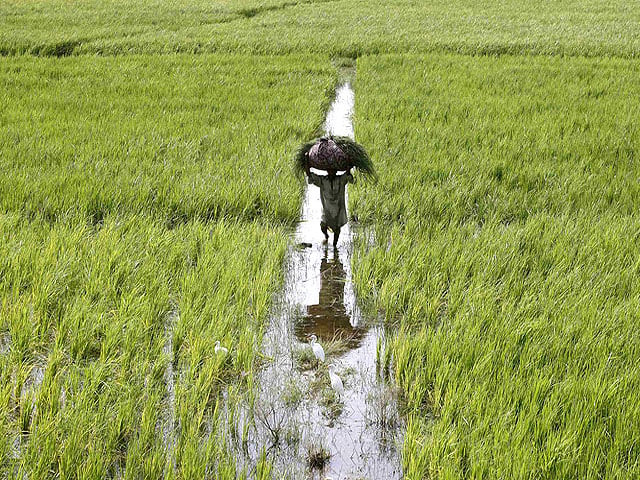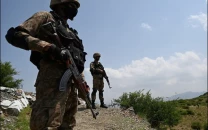Agriculture and aid: FAO warns of food crisis
Last year’s floods destroyed crops over 2.4m hectares of land, additional funding is needed to recover losses.

A recent meeting of UN ambassador to Pakistan Rauf Engin Soysal, stated that a food crisis seemed eminent in the country.
The ambassador said that international aid following last year’s floods was insufficient and given the monsoon season this year another flood could seriously damage the country’s agriculture sector. “There is a lot that still needs to be done for the 22 million flood victims of Pakistan. The inflation of food prices is likely to keep increasing,” he added.
The ambassador said that a food crisis would not only affect flood victims but would also ravage the agriculture sector, which was the back bone of the Pakistani economy. As the monsoon season has been indicating additional floods this year, farmers fear more devastation.
“Farmers have not forgotten last year when 2.4 million hectares of crop and 4 million livestock was destroyed in the floods. They have still not been compensated for this,” said a district official, Rahman Qadir.
Out of the total number of flood victims, 80 per cent include small farmers who still require sustainable instalments of aid from national and international agencies.
The Food and Agriculture Organisation (FAO) provided support to the families of farmers by donating wheat, sunflower, rice seeds and emergency compound feed for animals/ “Over 1000 water courses were rehabilitated,” said FAO official Ali Khan. However, food inflation has increased to an unexpected annual rise of nearly 40 percent due to the deferral of proper assistance for farmers. “We need more aid. If it is not received soon a food crisis is imminent,” he added. “The agriculture sector was hit the hardest by last year’s floods and it may take 3 to 4 crop seasons for us to the condition to neutralise,” he added. FAO has rehabilitated 36,000 hectares of agriculture land and made it cultivable in six severely affected districts.
According to FAO, taking into consideration the damage and need assessment key priority areas of intervention were estimated at US $736 million and the total response in the agriculture sector to date is US$262 million. “There is a funding gap of about US$474 million,”
he said.
Despite the above successes, much remains to be done to further restore rural livelihoods, improve food production and for income generation. FAO’s Early Recovery Program requires $96 million to support an additional 430,000 farming households in 14 severely flood-affected districts of Pakistan over the next two years.
A year later...
The floods that struck Pakistan starting in July 2010 represented one of the most devastating natural disasters of our times, submerging almost one-fifth of the country - an area the size of Greece - killing 2000 people, affecting 20 million and destroying 1.6 million homes.
Damage to agriculture - the basic livelihood for 80 percent of the affected population - was estimated at over than $5.1 billion, including the loss of over two million hectares of crops. The devastated area included the breadbasket province of Punjab and much of Pakistan’s most fertile land. The disaster struck at a crucial point in the agricultural calendar- just before the harvest of spring-planted crops and within weeks of the critical winter wheat planting season. Livestock surviving the floodwaters lacked feed, veterinary support and shelter. With existing and future sources of food and income washed away, humanitarian aides raced against time to prevent a domino effect.
FAO interventions under the international Floods Response Program have rehabilitated 900,000 smallholder households - more than seven million people. Funded by $92 million, FAO’s efforts focused as a matter of priority on winter planting of wheat and vegetables and on spring planting of maize and rice as well as vegetables. Support was provided to preserve vital livestock resources and on-farm irrigation systems were repaired. From the onset of the floods, more than 200 organizations joined efforts through the Agriculture Cluster, led by FAO, to respond to immediate and critical challenges with the support of the donor community.
Published in The Express Tribune, August 7th, 2011.



















COMMENTS
Comments are moderated and generally will be posted if they are on-topic and not abusive.
For more information, please see our Comments FAQ